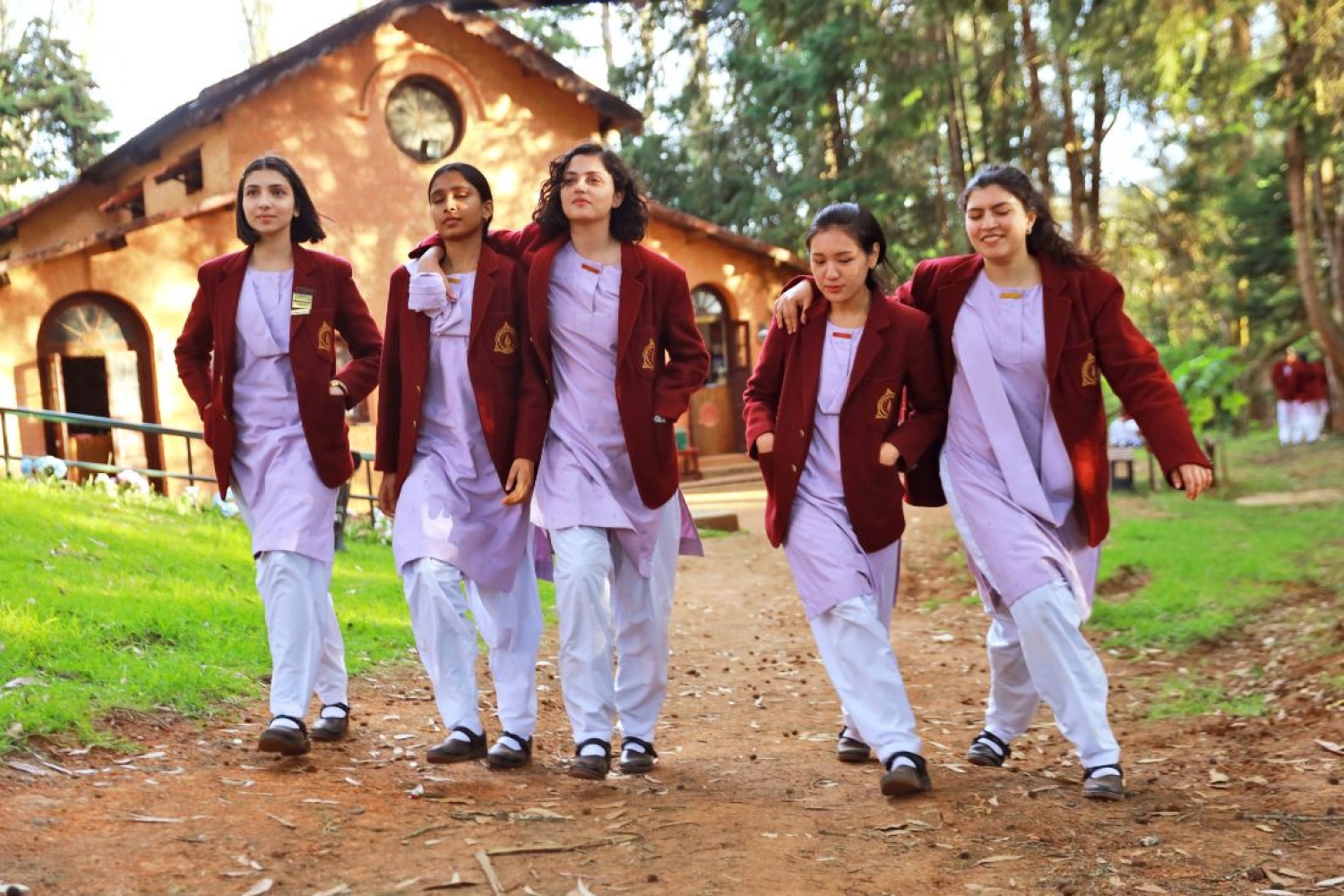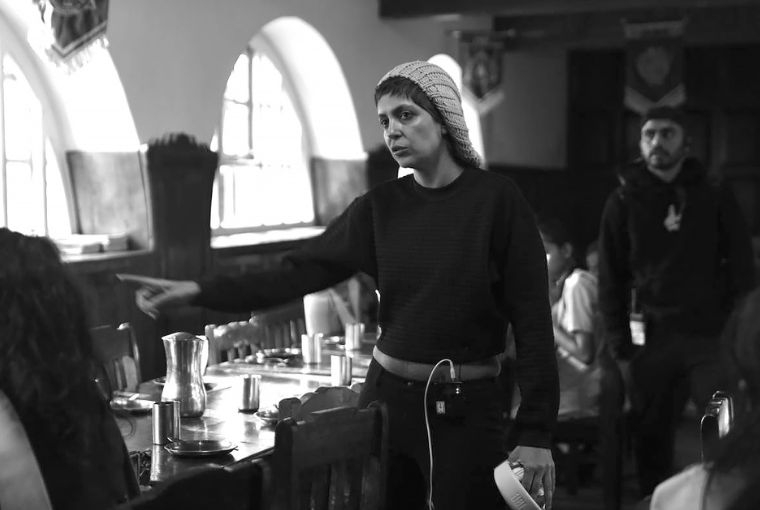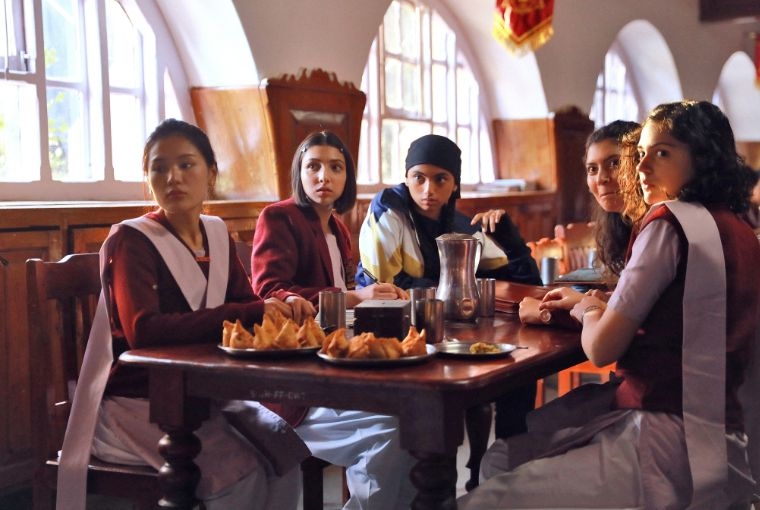

The innocence, the questioning, the simplicity and the search of who you are at the cusp of adulthood are some of the emotions that embrace the Prime Video series Big Girls Don’t Cry—a ‘kiss to adulthood’. The series celebrates the importance of sisterhood while discovering one’s inner self. It’s a coming-of-age story from the eyes, mind and hearts of teenagers who are trying to know and find themselves. ‘I went to boarding school and I’ve always thought that there is no authentic representation of this age group in cinema, so that was one reason. And secondly, why not make something for girls? Because again nobody does that. There’s so much stuff. I remember when we were going out to pitch the show, the first people that I went to, and I won’t take names, were like, but there are no boys. How can we make it? And in my head, not that I said it but I thought for years we’ve only ever been making male led films, series or whatever. So how is it so weird? And it’s not like we don’t have boys, but the show is completely a coming of age from the perspective of girls.’
Filmmaker Nitya Mehra tells us more about the process, the story and her interaction with seven new faces on one screen.
As you mentioned you went to boarding school as well. So how much of your own reality you have depicted in the show?
I think my biggest scare is to be in my forties and telling a story about 16-17-year-old girls and not getting it right because I feel like you don’t want your 40-year-old perspective, coming into what is actually the most carefree time in your life. I think by the time we start living life, we’ve experienced so much. I remember in school we basically laughed about nothing. We spoke about nothing and there was a lot of ‘just being.’ 25 years ago, things were very different to where we are now, the youth is very different and the way they think is very different, but there is an inherent innocence of just being in your late teens. And that’s what we are trying to explore. I just want to draw on times like that where you could be carefree and I hope I’ve kind of done justice to it. And I think in some ways we have.
What kind of research did you do to make it relevant?
Well, it is set in today’s time, but it’s still set in an institution, which is set in traditions. And I think that is what a lot of public boarding schools are like. They take a lot of pride in tradition. And that made it easier for us because we weren’t doing your new age modern schools. We were still going to represent an old age boarding school where traditions sometimes come in the way of the new age, so to speak. So, in terms of research, we obviously went to schools. We did a lot of recordings. We spoke to children. We also figured out what kind of rules they still follow. Like in a lot of boarding schools, there are no mobile phones still allowed and I found that very interesting. So, I think research was basically, just talking to a lot of students that are currently in school and also looking at boarding schools, at the architecture, looking at classrooms, building that into our narrative. The school itself is a big character in the show. So just getting that right.
And you worked with all newcomers and young kids. How challenging was that to bring in fresh talent?
It really wasn’t, I think, I wanted everything about this show to be supremely authentic. It needed to be true to the space and the habits, the way they talk, the way they dress, and I think the first step of that is casting. Yes, we went on a limb, and we got newcomers, but I do think that it’s our USP because it’s not like we looked for newcomers. We just looked for supremely good actors. And a lot of them have done a little bit of work or are interested, but a lot of them didn’t even think that this would be their career. So we justsent out casting calls. I mean, we went through thousands of auditions and narrowed down on the final seven.
We were very clear of who our characters were. So it was very easy for us to just sift through. We knew exactly what we were looking for. And of course, the girls that came in, they’ve just brightened those characters and have infused life into them, and they’re amazing. And I’m so honored to have had the chance to hold each other’s hand and go through this process. But they’re brilliant. They’re brilliant, and I couldn’t be happier with the cast.

There are seven distinct girls but they all come from the same space of sisterhood — how did you kind of curate each character?
I think it all happens in the writing. We were very clear we wanted to have a bunch of themes that run through the show. The universal theme is know thyself, which is, who are you? Because I feel that teenage is the first time that you start jostling with that idea of identity. So be it religious identity, sexual identity, body image, whatever it is, you are jostling with that. And infact I think it’s an eternal thing that you keep working towards. I don’t think that at 16, 17, you find it, but I think it’s the first time that you start engaging with that thought. So we were very clear at the writing stage. These are the themes that we want to hit. And when you know thematically what you want, you kind of build these characters where they come from, give them the backstories, and then somewhere through the middle the themes and the characters meet up. And in that synergy is where you find script magic.

This is an exclusive excerpt from our March EZ. To read the entire article and more such pieces, follow the link here.
Words Shruti Kapur Malhotra
Date 14.03.2024